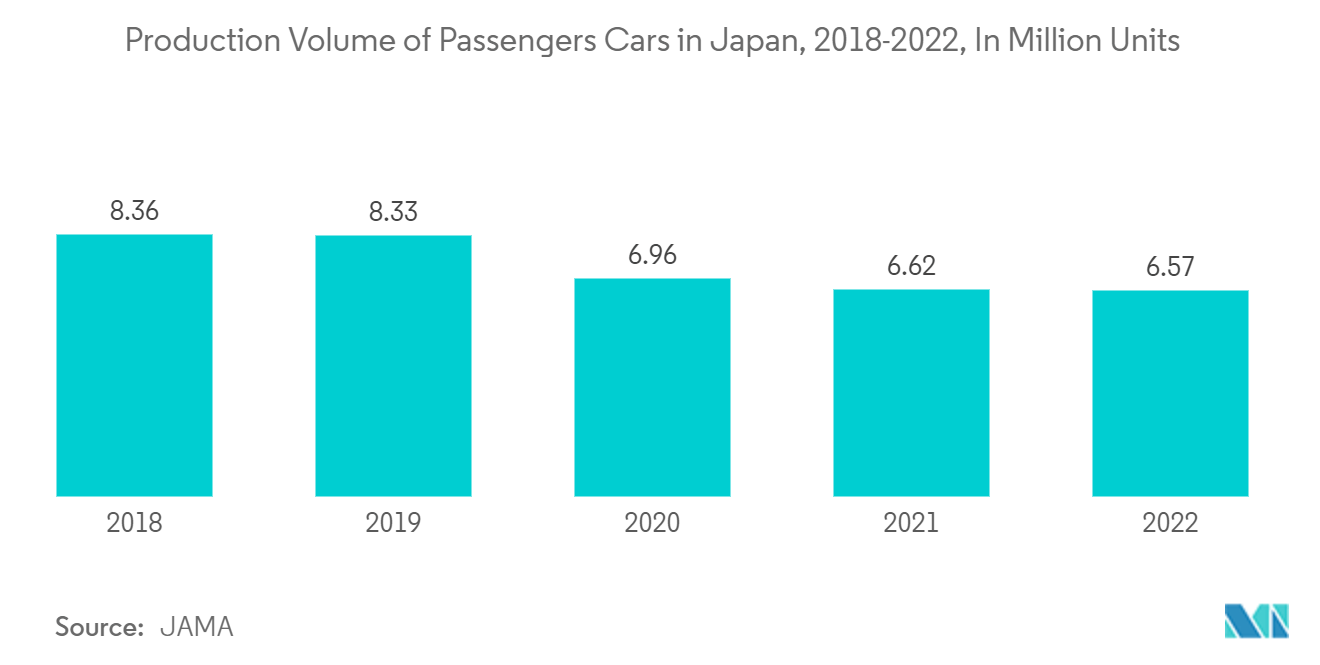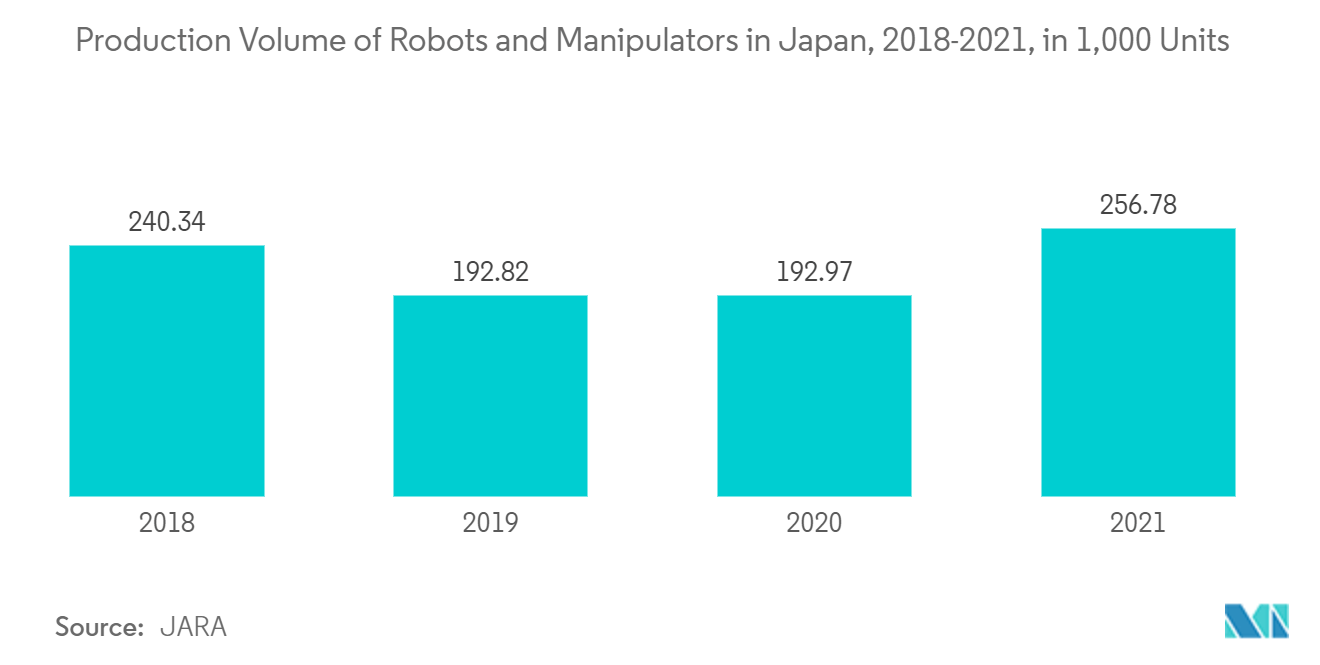Market Trends of Japan Sensor Industry
Surging Demand in the Automotive Sector
- The growing demand for autonomous vehicles in Japan may support the market's growth over the forecast period. The sensor acquires external information through different means and transmits it to other components, making life easy for drivers.
- The sensor acts as an electronic device in various aspects of the car, such as its coolant system, temperature, oil pressure, vehicle speed, emission levels, and engine. It sends signals to the electronic control unit to make appropriate adjustments and warn the driver. There are various types of sensors used in automobiles, such as speed, parking, temperature, airflow, oxygen, and fuel temperature sensors.
- Sensors are used to ensure that the engine is maintained correctly. It also enables automatic control of specific functions such as headlights and windscreen wipers and easily detects faulty components in a vehicle. Increasing safety concerns, sustainability (zero emission), and vehicle electrification (e-mobility) are trends positively impacting the role of sensors in commercial and passenger vehicles.
- The Japanese government plans to provide incentives for deploying electric vehicles to reduce carbon footprint. It has invested heavily in developing an electric vehicle infrastructure. In Japan, the introduction of government subsidies for EV buyers to support the growing number of EVs has increased the number of EV charging stations, creating a high demand for sensors.
- According to JAMA, in 2022, approximately 6.57 million passenger cars were produced in Japan, down from about 6.62 million units in the previous year. The total domestic production volume reached about 7.84 million units, including buses and trucks next to passenger cars.
- Several automobile manufacturers are focusing on expanding their footprints in Japan, supporting market growth. For instance, in July 2023, BYD announced entry into Japan's passenger vehicle market, planning to offer the Atto 3 model. Sales of the BYD Atto 3 were expected to begin in January 2023. The second model was expected to be the BYD Dolphin, scheduled for mid-2023, and the third is expected to be the all-new BYD Seal, scheduled for the second half of 2023.
- Leading industry players are introducing technologically advanced sensors to meet the growing demand from the automotive sector. For instance, in January 2022, Texas Instruments announced an expansion of its automotive offerings to help automakers improve ADAS sense objects by adding its new AWR2944 radar sensor to the company's extensive portfolio of embedded and analog processing products and technologies. This sensor can monitor blind spots, detect objects, and efficiently navigate turns and corners, paving the way for automakers to achieve their vision of a collision-free future.

Growing Adoption of Industrial Robots
- The growing adoption of industrial robots in various industries may support market growth. Nowadays, robots perform multiple tasks in electronics, industrial, and automotive manufacturing companies. Industrial robots use many sensors to achieve superior manipulation and control in industrial automation production methods. The robot's sensors allow it to react flexibly to its environment, and cutting-edge sensor technology takes its IQ to new heights.
- Sensor technology is one of the most important applied sciences for industrial robots. It allows robots to navigate and perceive environmental changes and make accurate decisions in challenging situations, just like humans. In the case of robots, especially in industrial automation, sensors must correctly provide important data to accomplish the complex processes involved. Industrial robots comprise several sensors for proper control and operation in industrial automation processes.
- Japan is known as a prominent industrial robot supplier and has been aiding in the sensor market's growth. Industry 4.0 has fueled new technologies, such as collaborative robots. AI has allowed industries to use robots to streamline many processes, increase efficiency, and eliminate errors. Increased workplace safety and improved production capabilities have further driven investment initiatives in robotic systems.
- According to the IFR in its World Robotics Report 2022, Japan remained second to China as the largest market for industrial robots. Installations were up by 22% in 2021, with 47,182 units. Japan's operational stock was 393,326 units (+5%) in 2021.
- The country has a predominant market share in the robot manufacturing industry and installed methods where industrial robots are used to assemble robots. The country also houses multiple leading companies like Nippon, responsible for 47% of the global robot production, as per IFR.

